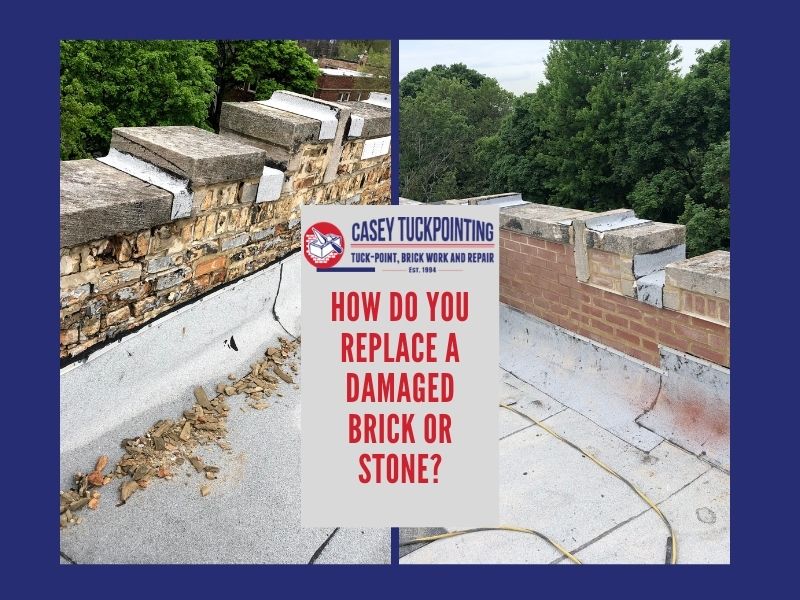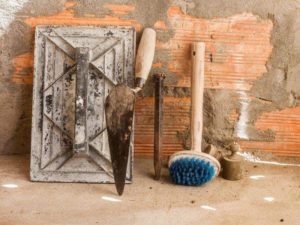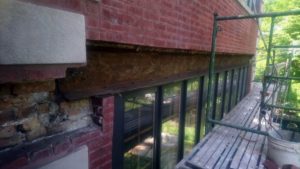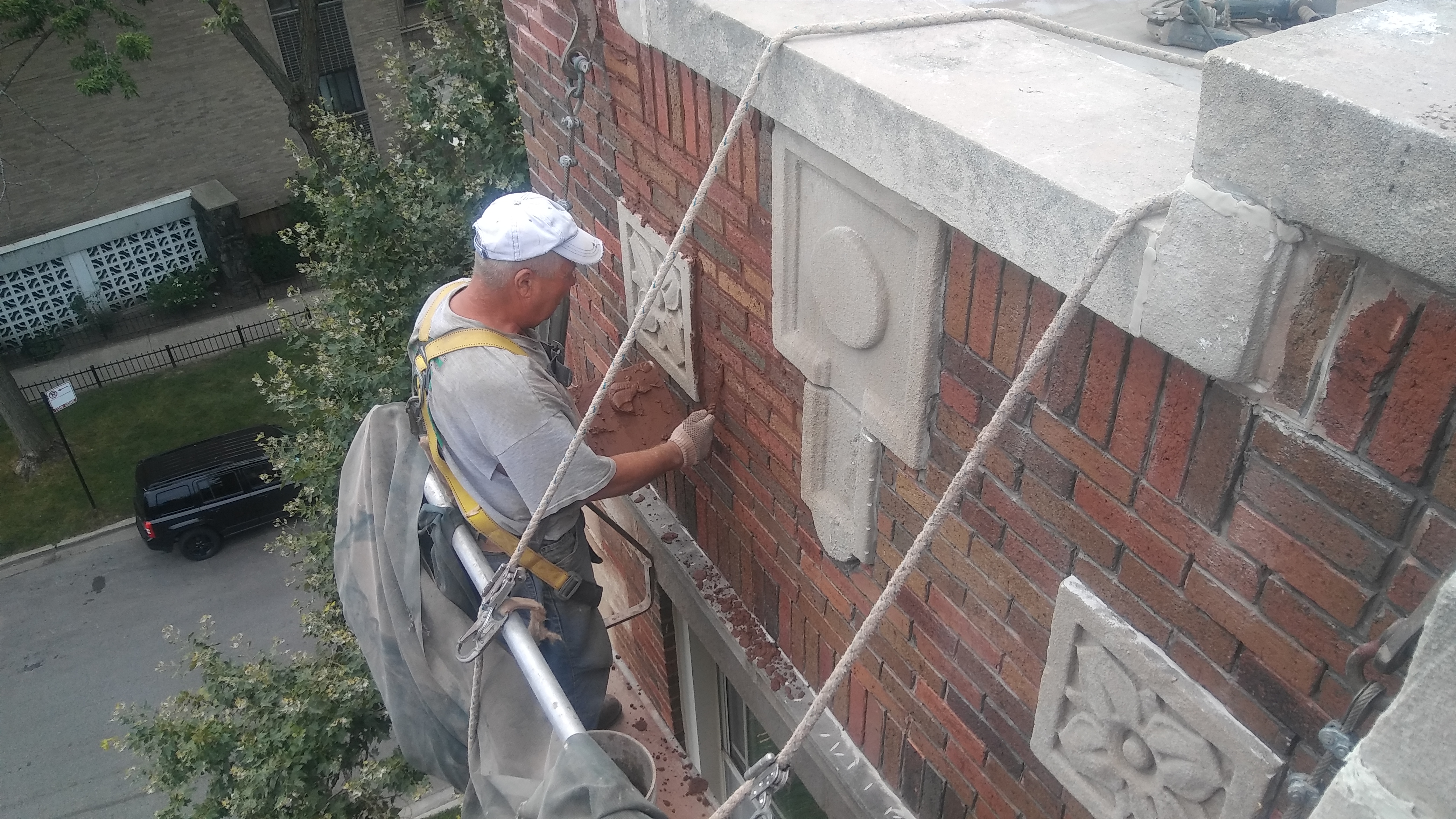There are few materials that look as impressive as a red brick. Before the popularization of concrete, it was the most popular building material for all structures – from public buildings, through bridges and walls, to single-family houses. Unfortunately, time and harsh weather conditions can take their toll on brickwork and make it lose its charm, so it’s worth finding out how you can restore its former glow through brick repair and tuck pointing masonry. A damaged facade is very common. Changing weather conditions, natural erosion of the material and mechanical damage are the most common reasons that make it necessary to hire professional Chicago masonry contractors who will effectively provide restoration services.

Cracked, chipped, or spalled bricks should be removed and replaced with new ones that match the colors of the rest. Spalling is a common issue that comes from moisture. Spalled bricks cannot be repaired, they must be replaced. The damaged brick is crumbled and taken out of the wall piece by piece. After the brick has been taken out, the spot is then cleaned and primed. After applying the mortar, a new brick is inserted and when the mortar has set, the joint around it is then filled.
If more than 30% of the facade is damaged or if all the damaged bricks are concentrated in one place, it’s a good idea to consider the complete or partial dismantling of the wall and its reconstruction with new bricks, but such work should be carried out after consultation with professional masonry and tuck pointing contractors.
Can I Replace a Brick Myself?
As brick or stone facades can impact the structure of the house, it is important to hire professionals to do it. For most people, this is not a do-it-yourself type of job and it’s not recommended for beginners who have never done any manual work.
If only one or a couple of bricks need replacing, you can do it yourself. In this article, we’ll walk you through the steps of what needs to be done.
If more bricks need repair, it’s always good to know what it entails and what to expect from your local contractors.
Required Equipment:
- Protective equipment (gloves, glasses)
- Drill
- Chisel
- Trowel
- Hammer
- Mason’s chisel
- Wire brush
- Brush
- Sponges
- Sealing mortar
How to Remove Damaged Bricks
After you have identified the bricks that need replacing, you will need to remove them from your wall. Do not forget to put on gloves and protective glasses while you work. At first, you will need to use a drill to make a series of holes, at regular intervals, in the mortar that surrounds your damaged brick. You will then need to remove all larger loose particles of mortar around the bricks with a chisel and a hammer. When you have removed the mortar that’s holding your brick in the wall, carefully remove the damaged brick.
Are you planning brick repair and replacement?
Fill out the form on our website and contact the best Chicago masonry contractors today!
Clean the Gap
Clean the hole where the brick has been removed by scraping up the old mortar and remaining brick pieces with a chisel. Using a wire brush, scrub the sides of the hole. The gap should be as clean and smooth as possible and ready for the insertion of the new brick. This step is extremely important and will allow you to avoid unexpected changes mid-project that may have serious cost implications.
Remember to generously dampen all surfaces of the cavity, with a wet sponge, to ensure the adhesion of the mortar that will be applied later.
Prepare the new brick and put it in place. If, when you turn over your old damaged brick, you will find that it is intact on the side that was not exposed, you can reuse it by turning it over. However, if your brick is degraded on both sides, replace it with a new brick of the same size and similar color.
Moisten your brick well before putting it in place and prepare your mortar. To do this, you will need to mix the sealing mortar powder with water, until you get a homogeneous mixture. Then you are ready to coat the faces of your bricks with your prepared mortar. Remember not to cover the part that will be visible on the wall. After preparing your brick, slowly slide it into the gap. Make sure that it’s well-aligned with the other ones. Shape the joints with a trowel to match the existing brickwork.
After you are done with these steps, remember to remove the excess mortar and clean all of the surrounding surfaces with a wet sponge.
Tuck Pointing Brick
 Sometimes, in order to regain the former glory of a brick wall, tuck pointing brick may be enough. Tuck pointing is the process of removing loose and damaged joint fragments with an angle grinder or with a hammer and chisel (the old-fashioned way). After the mortar is prepared it is then carefully placed in joints using a small trowel. The joint must be tightly pressed and smoothed. After a while, any excess mortar is collected from the surface of the bricks and after half an hour the facade is cleaned with a damp sponge.
Sometimes, in order to regain the former glory of a brick wall, tuck pointing brick may be enough. Tuck pointing is the process of removing loose and damaged joint fragments with an angle grinder or with a hammer and chisel (the old-fashioned way). After the mortar is prepared it is then carefully placed in joints using a small trowel. The joint must be tightly pressed and smoothed. After a while, any excess mortar is collected from the surface of the bricks and after half an hour the facade is cleaned with a damp sponge.
Stone Repair and Replacement
In the event of damage to stone elements, there are several ways to repair them:
● natural stone replacement which means replacing deteriorated stone parts with original stone fragments,
● stone indenting, or filling the losses with another natural stone which is carved to fit that space perfectly.
The Importance of Acting Quickly
If you find that your masonry walls need some attention, don’t wait until it’s too late! The faster the job is done, the better. Acting quickly means preventing problems in the future, so call us today! With years of masonry expertise, we provide the highest quality brick repair and replacement and stone repair and replacement.




















